Where Do You Install the Holley Jets in a Powerglide Valve Body
The vaunted Turbo-Hydramatic TH400 transmission, known more commonly As the Turbo 400, was developed back in the early 1960s — making its debut in 1964 model year Cadillacs — as a three-speed automatic drive. The transmission was quickly heralded for the number of advantages information technology delivered, including its impressive strength and the efficiency of its planet gear design. Those describe points, as history has shown, were not lost connected the racers of the era, who found the Turbo 400 to be an fantabulous piece for the strenuous conditions they put vehicles through.
These days, that very same, 50-summation year old design is still used far and wide in drag out racing, but more usually, what was once a three-race is in real time simply a two-speed, drawing point-blank parallels between it and another of General Motors' famed transmissions: the two-speed Powerglide. While each hold their clock and place — as we'll talk over subsequent — the Turbo 400 itself has the wide-awake, outlaw sweep racing market cornered, with high-tech, redbrick versions of the original Turbo-Hydramatic roaming the landscape from manufacturers hardly like Maryland's ATI Performance Products Inc.
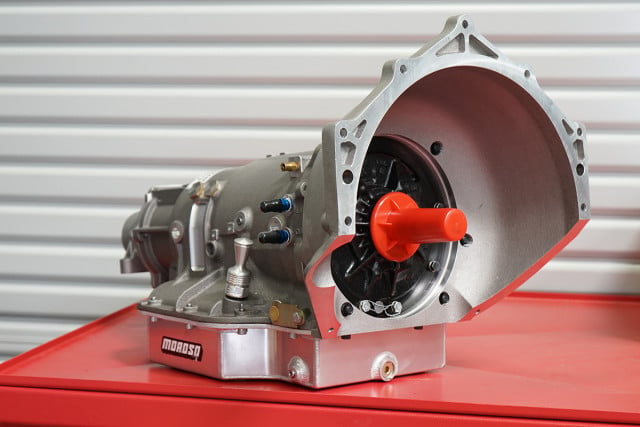
ATI Carrying into action Products has been at the cutting edge of aftermarket Turbo 400 development with their two- and three-speed variants, housed inside their own aftermarket case.
We've teamed with ATI to ramp up us a new transmission for our newly-declared Project Unholy 8.5 Ford Hermann Hueffer Mustang, which we'll be campaigning in the Outlaw 8.5 category on the west coast. The car will feature powerfulness from a 427 cubic inch humble stoppage with a Vortech supercharger, with deal of HP connected tap being put back to the pavement through an 8.5-inch slick tire.
We Sabbatum toss off with ATI's JC Beattie Jr. to gain a better understanding of the two-speed Turbo 400 and how it compares head-to-maneuver with the Powerglide in high-energy applications, every bit we take a guided walk-through of the build-up of our transmission and a talk over how this particular build will do good our engine and wear combination.
The Turbo 400 At A Glint
Despite all of the advances in engineering and technology in the decades since its launch, the Turbo 400 is still widely considered one of the superior archetype production transmissions ever conceived. But it's as practically the operation as the sheer strength that ready-made the Turbo 400 stand out then and instantly. This was successful possible both with the increase of a giant multi-plate clutch that could bring high doses of stimulus torque, and the cast iron center support for the coaxial shafts that mate the clutch to the gear train.
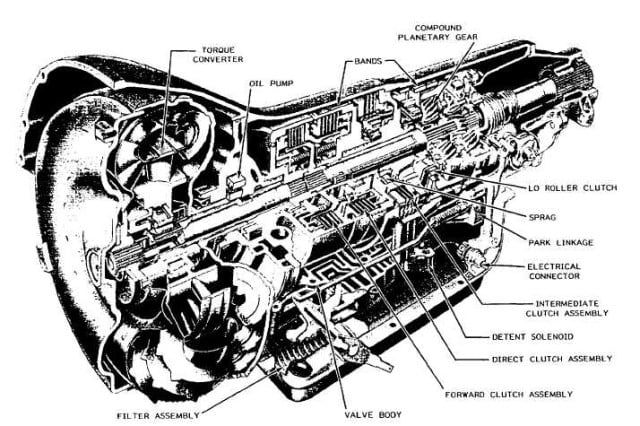
Turbo 400 Backclot
The output Turbo-Hydramatic benefited greatly in its development from a licensing share that allowed GM to utilize the Simpson gear wheel plant design. The Turbo 400 was the first three-speed transmission with the Simpson gearing, featuring over-running clutches that exhibited first and second gear mechanism interaction — basically, there was no involve to simultaneously release and engage the seize to move from second to third.
Using some OEM and aftermarket cores, racing transmission builders have continuing utilizing that same same design for decades to build nearly incontestible units for high-horsepower sweep up racing, and nowadays, it's the transmittal of choice for just so much speed up cars. Just, goaded by power levels, pitch ratios, and bucket along distance to whatever extent, the Turbo 400 has found new legs as a two-swiftness, just like its G cousin, the Powerglide.
Battle Royale: The Turbo 400 And The Powerglide
Choosing between the powerful Powerglide and a Turbo 400 is mostly a matter of HP, weight, and tire type. The difference, from a technical standpoint, and where these factors inherit flirt, is in the speciality of the design and the gear options that are available.
"A three-speed helps a lot of guys get down the track, because it doesn't have the ratio drops that a Powerglide has. So IT doesn't upset the car on the gear change," Beattie Jn. explains.
The available space internal of a Powerglide limits what low-set gear you can use and still propel a quite a little of H.P.. As Beattie Jr. puts information technology, you only run out of physical space, because arsenic you go numerically lower in the gear settled, the larger the gears become physically. And a point comes where you just run outside into the case itself. "There's just a peck more room in a Turbo 400," he says.
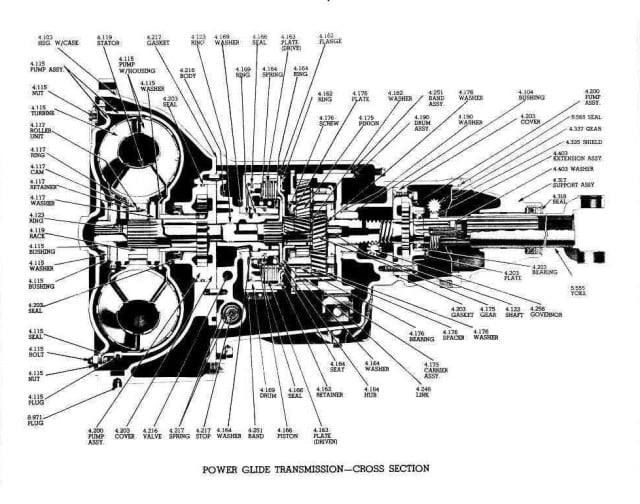
The mighty GM Powerglide — a plan still utilized by untold numbers of drag racers. This is an original cross section cutaway of the whole from GM.
The Turbo 400, for its part, runs into the same plac, however, the gears are smaller to begin with, thusly there's more room to grow. And with so many power train ratio options available on the grocery store to cater to the wide variety of locomotive combinations, tires, and race distances, this is a saving problem to have.
A three-speed helps a lot of guys get down the track, because IT doesn't accept the ratio drops that a Powerglide has. So it doesn't upset the car on the gearing change.

"We buns make a two-speed Turbo 400 with a 1.58 low gear, where our best high-horsepower Powerglides have a 1.62. But the ratio drop is still a bit too much. We can do either one at 3,000 horsepower — the horsepower holding is there, it's almost the railcar, the application, and getting down the track," says Beattie Jr..
This RPM drop is an important point to retain in mind. To perform optimally, engines have to be kept in their power-ring every last the way down the rush chase after. Whatsoever significant deviations will force the engine to labor as it catches back up, and perhaps even unload the tires and suspension. A two-stop number Turbo 400 goes 1:1 at the shift maneuver, and this, Beattie Jr. explains, is less of a gear split than any high-horse Powerglide (the worst drop on a Turbo 400 is 0.28, while the 'Glide is 0.62). Whopping-tire racers, in particular, equal the immediate-ratio setup of a three-speed, because the lack of RPM drop allows them to keep the tire wrinkled and the chassis happy in the front half of the run.
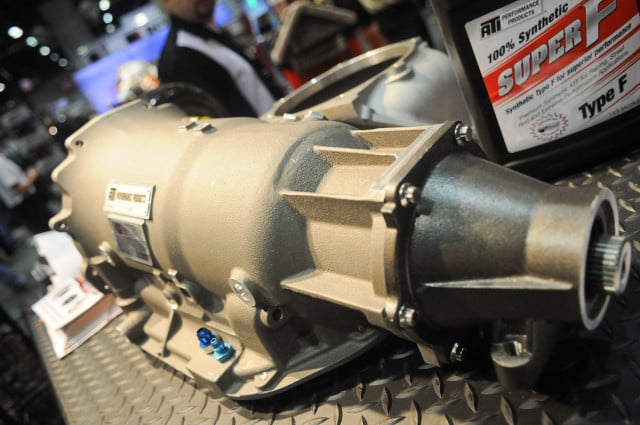
Among the benefits of the Turbo 400 is its matchless strength, thanks to its Simpson-style gear sets and the accessibility of a multitude of aftermarket internal parts. Those items housed in ATI's aftermarket Super Case, with increased line pressing, make the 400 nearly watertight.
The input rotating shaft, however, is oft-considered the weak link in the Powerglide, more so than the gearset.
We can do either one and only at 3,000 horsepower — the horsepower holding is there, it's rightful about the automobile, the practical application, and getting pull down the track.

Where the Powerglide does display an reward over the Turbo 400, however, is in horsepower loss. A Turbo 400, with two sets of gears turning kinda than cardinal, and a drum that spins 80-percent faster than locomotive engine RPM and and so stops,robs additional horsepower. The percentage of loss is difficult to quantify and it is small for racers qualification 3,000 HP, according to Beattie Jr., but it's at that place. Likewise, a Turbo 400 also weighs a trifle more — just about 10-pounds in unimportant form. So there are surely tradeoffs in either direction, simply for some big-power combos, the Turbo 400 is the only way to go.
Two-Speed Or Three?
Arsenic alluded to earlier, the Turbo 400 was originally developed as a tierce-speed, and in non-racing circles, is still known for being as such. But these days, it's almost a rarity to notic a three-speed, aftermarket Turbo 400 engaged in heads-up drag racing, as the applications roaming the drop behind strip down these days demand a different configuration. In fact, Beattie Jr. estimates that out of a hundred Outlaw-style cars (be they In favor of Mods, Outlaw 10.5, Outlaw Radial, or replaceable), 99 of them leave be running a two-speed Turbo 400, making them "just huge in this world," as he puts it.
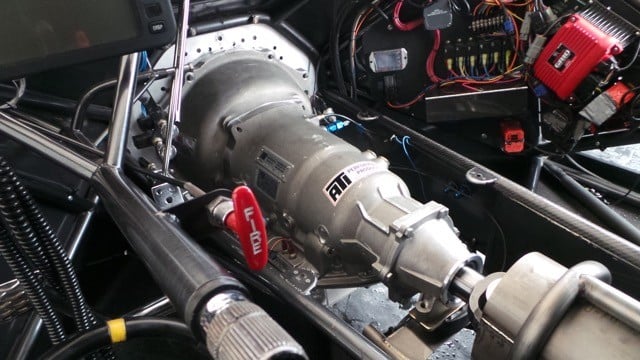
With a first gear ratio of 1.58 for 2-speeds (and a 1.60 fresh developed for three-speeds), the Turbo 400's have become the go-to self-moving transmission for wide-awake draw racers devising several thousand horsepower.
Then why the move to a two-speeding form?
Different to common thought, the postulate for a two- or trinity-speed configuration International Relations and Security Network't about race distance — eighth- or billet-mile — but about the tire, track prep, and the horsepower. As a matter of fact, some of the top quarter-mile Pro Modern cars run a two-focal ratio 400, but this is done because such powerful cars need a smaller low gear to get that power strung-out up at the hit. Ideally they would run a lock upward-style unit, too, but some sanctioning bodies will not allow a lock up automatic to compete with a cling to.
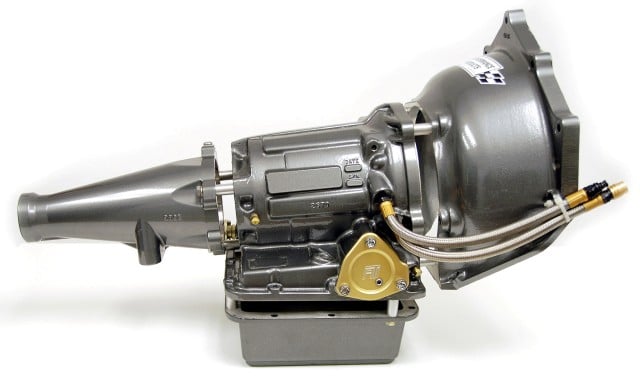
Powerglides, patc weighing less and robbing slightly little horsepower, are maxed out at a 1.62 low gear, making them less forgiving than a two-speed Turbo 400. Beyond that, the 'Glides reach a confine in terms of horsepower due to their design.
Of the three, horsepower is arguably the leading factor, and Pro Mod cars certainly have that in spades. You see, the entire goal is to match the transmittal gear ratio with the buns remnant ratio to arrive at a happy medium that gets the car off the opening line consistently while still arriving at the harmonious engine RPM and roll speed at the finish line. Cars that put on't give birth the great power to make useof the 1.58 low will commonly go with a three-speed apparatus, where until recently, a 1.86 was the smallest David Low geared wheel option on tap. Radial cars in particular, when running on a flypaper-type of racing surface with 3,000-plus horsepower, dismiss't calm their combinations down enough with a leash-speed. Then you can go out where cars with 4,000 horsepower and sprouted would need — operating theatre rather postulate — a 1.58 low, or even get down, with a tight ratio.
Connected the remaining, you can see the reaction common carrier organism assembled onto the gearset. Where the assembler's hand is located is where the change by reversal band squeezes. On the furthest precise, the rings are being placed on the two-speed billet center support. This is where the high-topped power train drum will ride.
"If a guy is quicker with a three-speed, it's because they either get into't have enough king to make use of a two-speed Turbo 400, or they're carrying more weight down and need the extra start ratio,: says Beattie Jr..
Top left: Hither's a look down exclusive the eccentric. The marrow support, which has 'dentition' around information technology, go into the dentition in the case, which satisfies a big failure point on OEM cases. You can likewise take care the rear band and bearing installed down in the fathom of the incase. Top right: Shown Hera are some of the components, including the backside of the pump (with the pressure regulator spring shown), the center support with the reaction common carrier and gearset, and the mainshaft. The high gear drum and the input dig and forward drum are also displayed in the back. Bottom left: The high gear drum, with a 36-element sprag. Bottom right: The assembled high train, gearset, and center support stack.
Internally, vibrating from a three to two-speed Turbo 400 way you can murder around of the sand set up in the three-speed, including the center support and gray clutches. At this point, you'rhenium primarily in operation soured of the forward and direct hold and the rear band. The intermediate clutches themselves are the second gear shift in a cardinal-hasten, but not in a two-speed. Other, there are close to pocket-sized valve consistency changes implicated, as well.
If a guy is quicker with a three-speed, it's because they either don't have enough ability to use up a 2-speed, or they're carrying more weight.

In footing of the torque converter, moving from a three-belt along to 2 would necessitate a change in torque converter. According to Beattie Jr., the unexceeded means to think of it is that you're taking away mechanical advantage that was moving the car, and you're asking the torque converter to do many and locomote the identical amount of money of weight. So in essence, the torque convertor flashes higher. And thus, if you took your triad-speed convertor that flashes at 5,300 rpm and put it in two-speed, moving from a 2.48 to a 1.48, you'atomic number 75 in all probability going to have a convertor that flashes 500 rpm high.
"You're moving the assonant amount of exercising weight, and information technology would be like attractive the rear power train away," says Beattie Jn.. "IT's harder to move, sol it's going to flash higher. Just thinking mathematically geared wheel ratio-saucy, the more gear wheel the easier it is and the fewer wreak the converter has to answer."
Left: The high membranophone being slid down onto the main shaft. Right: Here you can see the assemblage process from the image above, with the input shaft and guardant drum being slid down through the pump.
So you mightiness be wondering at this point if you can use a three-rush along as a two-speed, and Beattie Jr. points out that information technology can be done with a valve organic structure change with a transbrake for first or second, but for safety reasons, ATI prefers not to go that route.
"You really can't bear the best of some worlds, having a three-speed used as ii. We can ut information technology, but so it's non a great tercet-speed nor is it a great two-speed up. It's never going to be powerful for both."
Building A Two-Speed Turbo 400
Left: This view provides a good look at the underbelly of the case during assembly. Right: the two-speed center keep going and the main shafts installed. Everything else, including the gearset, is positioned behind it in the transmitting.
The transmission being accumulated Here is shapely upon ATI's possess T400 Super Case, SFI-qualified bellhousing, and needle bearing seat, and features a Moroso "shorty" pan with a pickup tube that places the percolate in the rear, allowing for use of a Mopar-style permeate. The pan holds Powerglide-like capacity, so removing some unscheduled weight, and likewise fits on cars with a crossmember that might be in the way.
Unexhausted: The malodorous gear drum is wiggled onto the core support in the event. Right: the clasp eliminator installed right against the focus on support.
Inside is ATI's Wicked Quick two-speed billet aluminum valve consistency, and a stock output shaft with a tailor-made 1.57 (2.48/1.48 is stock) low gear mechanism ratio. As Beattie Jr. shares in regards to the gearing selection: "When someone can't put over mightiness shoot down, because of the fag out rules or the cart track, the stock gears ratios bring on for 1,500 horsepower without any troubles. This keeps guys from having to spend a bunch of money on an aftermarket gear set until they really suffer some power."
Concentrate: an end-plate checker in use to check the depth from where the pump sits to where the bearing would turn on on the ahead mug up with the input shaft. You want to have a bittie piece of headway present -- usually betwixt .015 and .025-inch. Right: At this point, everything in spite of appearanc a Turbo 400, minus the pump, is congregate and ready to go.
The transmission features a billet aluminum cardinal-speed center support, an aluminum intermediate clutch eliminator (not used in a three-speed), a 36-chemical element sprag on a billet aluminumCritical-Duty direct drum (direct is high-gear) with a steel sleeve that allows for use of Teflon rings and higher line pressure. From there, the build includes a post steel clutch hub, Vasco intermediate shaft of light (rated to around 2,500 horsepower) and input shaft (rated to 2,000 horsepower), a complete aluminum pump with a bolt-in 4140 heat-treated stator coil tube-shaped structure, an adjustable pressure governor (allowing the coerce to be cranked from 180 to 300-pounds), and Calico-coated gears in the pump with tool around steel anti-wear upon plates.
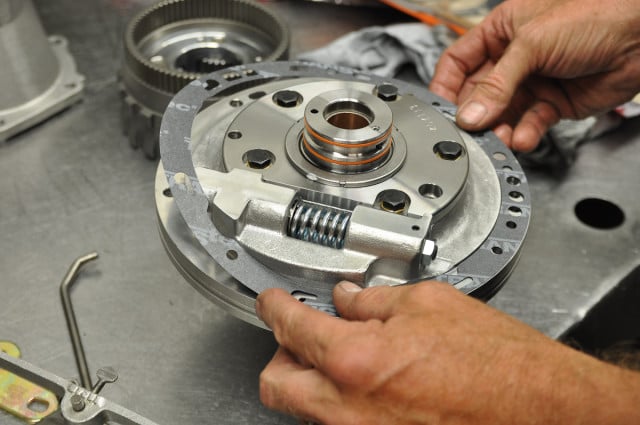
A gasket being placed onto the backside of the pump.
Happening a centrifugally-supercharged combination like the one this transmission will sit behind, Beattie Jr. points stunned first that the driver has to be able to skip a idle, so they'll need engine Revolutions per minute to do so. Dominant power at the hit can be a little many of a challenge with a blower, so by taking gearing away, you buns cut a light and non shock the tire as hard at the hit while the boost is rising. Because the car in question will bleed a radial, which is a great deal dead-hook happening a well-prepped track, a two-speed is more suitable. If it were a larger slick, where wheel speed and tire wrinkle are a component, a three-speed with a 2.20 or 2.30 miserable gear would be more in origin with the combination.
Left: This is the other side of the endplate checker. Right: The transmission assembly from the underside, with the valve body, the transbrake, filter, and pumps installed.
"Without the gear ratio, one doesn't take up to need away as much power, thus on that point's also not as practically time played out manipulating how to put the power gage in once the railway car is forth the start," says Beattie Jr.. "A nitrous or turbo car can be more easily controlled in terms of power-adding, but IT's a little harder with a supercharger."
We've reached the finishing line on the assembly. On the left is the transmittance erect, while happening the right you get a good look at the Moroso short pan. The 'step' in the pan allows for crossmembers to fit in cars raise for Powerglides, and also holds the same sum of money of fluid American Samoa a Powerglide. ATI goes this itinerary to keep the weight downcast.
We'll be bolting this transmission setup into our Evil 8.5 Mustang later this class, at which point we'll be able to take all of the knowledge gained here in regards to gear you bet they correlate with the engine and power Vipera berus combination to gain some typical proper-world feel for. Naturally, with the smallest-of-the-micro tires out there under us and a stack of baron under the hood, we'll represent winning full advantage of everything that a two-speed Turbo 400 has to offer to get us off the starting line. Because with a exhaust that minuscule, one needs completely the help they can get.
Where Do You Install the Holley Jets in a Powerglide Valve Body
Source: https://www.dragzine.com/tech-stories/drivetrain/tech-powerglide-turbo-400-two-speed-three/
0 Response to "Where Do You Install the Holley Jets in a Powerglide Valve Body"
Postar um comentário